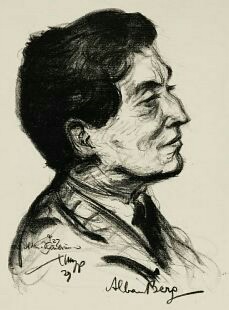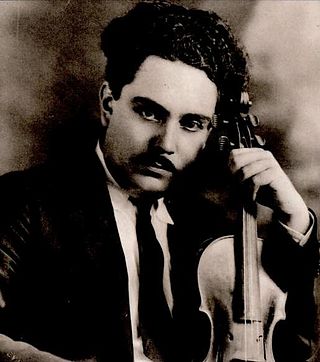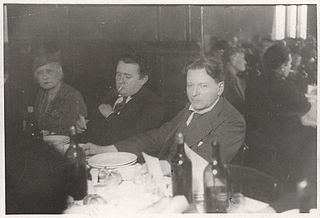Related Research Articles

Walter Hamor Piston, Jr., was an American composer of classical music, music theorist, and professor of music at Harvard University.

The String Quartet No. 1 in F major, Op. 18, No. 1, was written by Ludwig van Beethoven between 1798 and 1800, published in 1801. The complete set of six quartets was commissioned by and dedicated to the Bohemian aristocrat Joseph Franz von Lobkowitz. It is actually the second string quartet that Beethoven composed, following his third.

The Lyric Suite is a six-movement work for string quartet written by Alban Berg between 1925 and 1926 using methods derived from Arnold Schoenberg's twelve-tone technique. Though publicly dedicated to Alexander von Zemlinsky, the work has been shown to possess a "secret dedication" and to outline a "secret programme".
James Zuill Bailey, better known as Zuill Bailey is an American Grammy Award-winning cello soloist, chamber musician, and artistic director. A graduate of the Peabody Institute of the Johns Hopkins University and the Juilliard School, he has appeared in recital and with major orchestras internationally. He is a professor of cello and Director of the Center for Entrepreneurship at the University of Texas at El Paso. Bailey’s extensive recording catalogue are released on TELARC, Avie, Steinway and Sons, Octave, Delos, Albany, Sono Luminus, Naxos, Azica, Concord, EuroArts, ASV, Oxingale and Zenph Studios.
Martin Boykan was an American composer known for his chamber music as well as music for larger ensembles.
Symphony No. 2 by Walter Piston is a symphony composed in 1943.
The Sonatina for Violin and Harpsichord is a three-movement, neoclassical chamber work composed by Walter Piston in 1945, that marks the beginning of his postwar style.
String Quartet No. 2 by Walter Piston is a chamber-music work composed in 1935.
String Quartet No. 3 by Walter Piston is a chamber-music work composed in 1947.
String Quartet No. 4 by Walter Piston is a chamber-music work composed in 1951.
String Quartet No. 5 by Walter Piston is a chamber-music work composed in 1962.
The Vághy String Quartet is a Canadian string quartet known for its luscious and emotional sound, as talked about by the New York Times, as well as for its numerous performances throughout North America and Europe. Formed in 1965, the quartet has played and premiered many composers. It has also recorded many classical pieces, having a total repertoire of over 160 pieces. The quartet taught throughout Canada and won the 1977 Canadian Music Council award for best recording of the year.

La hija de Cólquide is a ballet score composed by Carlos Chávez in 1943–44 on commission from the Elizabeth Sprague Coolidge Foundation for Martha Graham. The title refers to the mythological character Medea, daughter of King Aeëtes of Colchis, in the story of Jason and the Golden Fleece. The ballet spawned several subsidiary works in Chávez's catalog including his Third String Quartet. When Graham eventually choreographed it, she wrote a new scenario and gave it the title Dark Meadow.

String Quartet No. 1 by the Mexican composer and violinist Silvestre Revueltas was composed in 1930.

String Quartet No. 17 is the last of seventeen quartets by the Brazilian composer Heitor Villa-Lobos, and was written in 1957. A performance lasts approximately twenty minutes.

Piano Quartet No. 2 in D minor, Op. 30, is a chamber-music composition by the Romanian composer George Enescu, written in 1943–44.

The String Quartet No. 2 in G major, Op. 22, No. 2, is a chamber music work by the Romanian composer George Enescu, composed mainly between 1950 and 1951, though it has a lengthy pre-history and received a number of revisions in 1952 and possibly early 1953. The score is dedicated to the American pianist, composer, and arts patron, Elizabeth Sprague Coolidge. A performance of it lasts about 25 minutes.

Gabriel Fauré's Piano Quartet No. 2, in G minor, Op. 45, is one of the two chamber works he wrote for the conventional piano quartet combination of piano, violin, viola and cello. It was first performed in 1887, seven years after his first quartet.

The String Quartet No. 1 in E-flat major, Op. 22, No. 1, is a chamber music work by the Romanian violinist and composer George Enescu, composed between 1916 and 1920. A performance of it lasts about 45 minutes.
References
- 1 2 3 4 Pollack 1982, 42.
- ↑ Copland 1968, 132.
- 1 2 3 DeVoto 1988.
Sources
- Copland, Aaron. 1968. The New Music 1900–1960, revised and enlarged edition. New York: W. W. Norton.
- DeVoto, Mark. 1988. Booklet notes for Walter Piston: String Quartet No. 1; String Quartet No. 2; String Quartet No. 3. The Portland String Quartet (Stephen Kecskemethy and Ronald Lanz, violins; Julia Adams, viola; Paul Ross, cello). CD recording. Northeastern NR 9001 CD. Boston: Northeastern University.
- Pollack, Howard. 1982. Walter Piston. Studies in Musicology. Ann Arbor: UMI Research Press. ISBN 0-8357-1280-X.